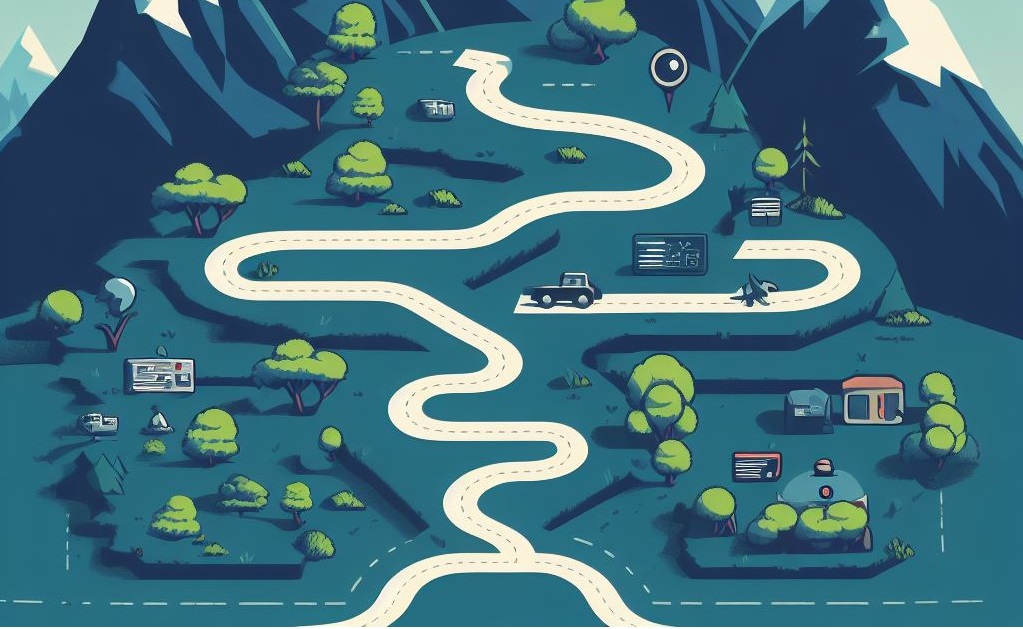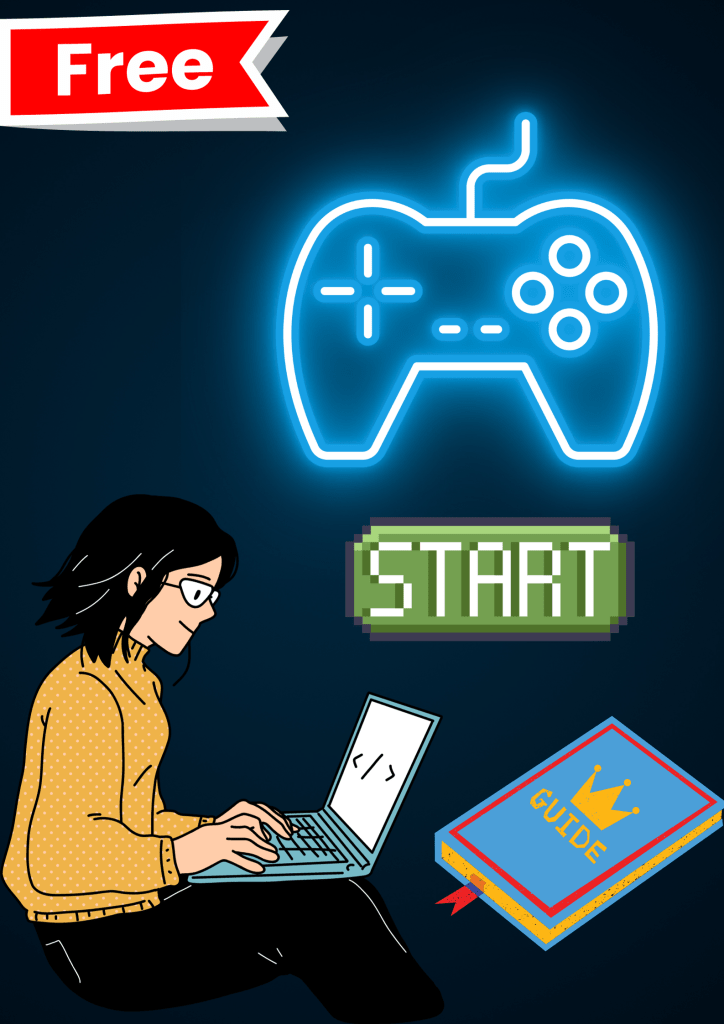Have you ever found yourself lost in the immersive landscapes of video games, marveling at the intricate designs, and pondering, “How do they create these magical worlds?” If your curiosity has ever led you to dream of crafting your own virtual realms, you’re not alone. The world of game development promises endless creativity, challenges, and the satisfaction of seeing your visions come to life.
Imagine bringing to life, characters with unique personalities, shaping narratives that captivate hearts, and engineering gameplay that elicits laughter, excitement, and awe. This isn’t just a distant dream; it’s the exhilarating reality of game development.
In this article, we will explore an overall roadmap of game development with a passionate lens. From the initial sparks of inspiration to the meticulous crafting of characters and the exhilarating moment of game launch.
Phase 1: Pre-Production
- Learn the Basics:
Game development starts with simple game design idea, understanding player psychology, and mastering programming languages like C++ and C#. Familiarize yourself with essential game development aspects like design, art, programming, and audio. Utilize online resources and library materials for comprehensive learning. - Choose a Game Engine:
Research extensively before selecting a game engine. Game engine such as Unity, Unreal Engine, or Godot provide a robust toolkit for developers, simplifying the development process.
Unity, known for its flexibility and extensive asset store, is an excellent choice for beginners. Unreal Engine, with its high-quality graphics capabilities, is ideal for immersive 3D games. Godot, an open-source engine, offers a community-driven approach and is perfect for 2D and 3D games. - Design Your Game:
Immerse yourself in game design principles. Study successful games, dissecting their mechanics, narrative structures, and user interfaces. Utilize tools like GDC Vault, a treasure trove of talks from industry professionals, to broaden your design perspective.
Document your ideas meticulously using tools like Microsoft OneNote or Trello, creating a comprehensive game design document (GDD). Prototype your game using software like Adobe XD or Sketch, crafting wireframes and mockups to visualize the user experience. - Build Your Team:
Hiring game developers is a daunting task. Understand the strengths and weaknesses of each team member. For artists, familiarity with software like Blender or Adobe Creative Suite is vital.
Programmers should have a strong grasp of algorithms and data structures. Game designers must excel in creating compelling narratives and gameplay mechanics.
Effective communication tools like Slack and Discord foster collaboration, ensuring a seamless flow of ideas and feedback. If you have a small game in mind, then you can try to make it yourself rather than hiring a team.
Phase 2: Production
- Create Game Assets:
Mastering tools like Blender, Photoshop, or Maya is essential for artists. Even if you are planning to hire an artist, understanding the basics of 3D modeling, texturing, rigging, and animation is crucial.
You can either craft these assets yourself or acquire them from online stores tailored for game developers. For beginners, online marketplaces like Unreal Engine Marketplace or Unity Asset Store offer a plethora of affordable assets for experimentation. - Implement Game Mechanics:
Bring your designs to life by coding the game mechanics. This step is where your game starts taking shape and becomes interactive.
Programming your game demands proficiency in programming languages and frameworks. Unity employs C# scripting, while Unreal Engine uses C++. Utilize version control systems like Git or SVN to maintain code integrity and collaborate seamlessly with team members.
Explore online coding platforms like GitHub and Bitbucket, fostering an open-source approach to learning and collaboration. Engage with coding communities such as Stack Overflow and Reddit’s gamedev subreddit for troubleshooting and innovative solutions to complex programming challenges. - Test and Iterate:
Rigorous playtesting is the cornerstone of game development. Test your prototype rigorously and be prepared for iterations. Feedback is invaluable; embrace changes in design and implementation to enhance the gaming experience.
Implement A/B testing, observing player behavior and feedback. Tools like Unity Analytics or Unreal Insights provide valuable data on player interactions and preferences. You can do this inhouse or hire professional play testers.
Embrace agile development methodologies, conducting regular sprint reviews and retrospectives to enhance team efficiency and game quality.
Phase 3: Post-Production
- Polish Your Game:
Address bugs, add final touches, and optimize your game for various platforms. Polishing elevates the overall quality, ensuring a smooth and enjoyable gameplay experience.
Implement debugging tools like Unity Profiler or Unreal Engine’s built-in profilers to identify and rectify performance bottlenecks. Optimize your game for different platforms, ensuring smooth gameplay experiences across various devices.
Embrace techniques like occlusion culling, LOD (Level of Detail) optimization, and texture atlasing to enhance performance. Implement user interface (UI) and user experience (UX) design principles, ensuring intuitive navigation and player engagement. - Market and Release:
Develop a marketing strategy to promote your game. Utilize platforms like Steam, itch.io, or the App Store for distribution. Engage potential players and create anticipation for your game’s release.
Crafting a compelling marketing strategy is essential. Utilize social media platforms like Twitter, Instagram, and TikTok to create hype and anticipation. Engage with gaming communities on Reddit, Discord, and Steam forums, presenting your game through captivating trailers and sneak peeks. Leverage crowdfunding platforms like Kickstarter or Indiegogo, garnering financial support from enthusiastic backers.
Utilize game distribution platforms such as Steam, Epic Games Store, or itch.io for publishing. Embrace digital marketing techniques like search engine optimization (SEO) and influencer marketing, expanding your game’s reach to a global audience.
Additional Tips:
- Start Small:
Initiate your journey with a simple project, gradually escalating in complexity as your skills evolve. Prototype multiple game ideas, experimenting with diverse genres and mechanics. Platforms like Ludum Dare and Global Game Jam offer themed game jams, encouraging rapid prototyping and creative exploration. - Ask for Help:
Engage with online communities like Unity Connect, Unreal Engine forums, or Reddit’s r/gamedev. Actively participate in local game developer meetups, fostering collaborations and mentorships. Seek feedback from experienced developers and playtesters, embracing constructive criticism to refine your game. - Have Fun:
Game development is a thrilling adventure. Immerse yourself in the creative process, relishing both successes and challenges. Collaborate with passionate individuals, learning from their experiences and sharing your knowledge. Celebrate each milestone, whether it’s mastering a new coding technique or receiving positive player feedback. Remember, the essence of game development lies in the joy of creation and the boundless possibilities that your imagination can manifest.
Remember, game development is not just a craft; it’s an art form that allows you to channel your creativity, technical prowess, and storytelling finesse into interactive experiences that can touch the lives of players around the world. The challenges you face will be stepping stones, the late nights of coding mere chapters in your epic tale, and every bug you encounter a puzzle waiting to be solved.
Don’t be discouraged if you find some concepts challenging at first; keep practicing and you’ll get there! Good luck!



